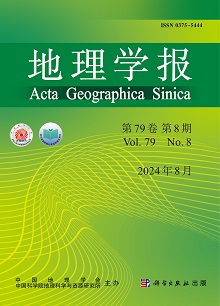Bibliometric Analysis of Desertification in the Period from 1974 to 2024 Based on the Scopus Database
Berdyyev, Arslan , Al-Masnay, Yousef A , Juliev, Mukhiddin , Abuduwaili, Jilili
2025-02-27 null null 14(卷), null(期), (null页)
Desertification remains a critical global issue driven by climate change, unsustainable land use, and socio-economic pressures. This bibliometric review provides an in-depth analysis of desertification research from 1974 to 2024 using the Scopus database to identify trends, key players, and methodological advances. Publications grew exponentially during this period, from 21 in 1974 to a peak of 186 in 2023, demonstrating growing academic and policy attention. The analysis found that 4178 authors contributed to 2004 peer-reviewed articles, with China emerging as a leading research hub, contributing 386 publications and leading efforts in environmental restoration projects such as the Great Green Wall. Advanced methodologies, including remote sensing and geographic information systems (GIS), have facilitated large-scale monitoring, despite challenges such as data inconsistencies and limited resolution. Institutions such as Guizhou Normal University and Lanzhou University have led the global research effort, publishing 316 and 124 publications, respectively. Influential journals, including Land Degradation and Development and the Journal of Arid Environments, have played a key role in shaping the discourse. Historical analysis has highlighted the persistent threat of desertification to human societies, exemplified by the decline of civilizations such as the Sumerian and Khorezmian. Despite significant progress, regional differences in research attention persist, with Central Asia receiving limited attention despite its vulnerability. This review highlights the need for standardized methodologies, interdisciplinary approaches, and enhanced international collaboration. By leveraging advanced technologies and sustainable land management practices, the global community can mitigate the environmental and socio-economic impacts of desertification, promoting the resilience of ecosystems and communities while moving toward land degradation neutrality.
相关推荐
- Desertification Monitoring Using Machine Learning Techniques with Multiple Indicators Derived from Sentinel-2 in Turkmenistan [2025-02-27]
- Sand and Dust Storm Risk Assessment in Arid Central Asia: Implications for the Environment, Society, and Agriculture [2025-02-27]
- Analyses and assessment of soil salinity modeling: review of papers from Scopus database [2025-02-27]
- Machine learning-based prediction of sand and dust storm sources in arid Central Asia [2025-02-27]
- Assessment of spatiotemporal features and potential sources of atmospheric aerosols over the Tianshan Mountains in arid central Asia [2025-02-27]



